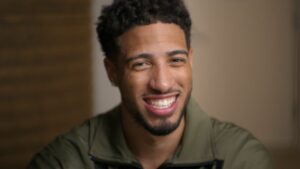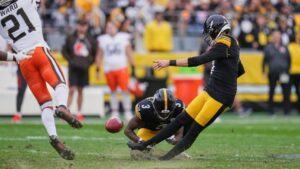The Jaguars justified trading up from No. 5 to No. 2 in the draft by explaining that, in Travis Hunter, they’d be getting two players in one.
So far, they’ve gotten one player split between both sides of the ball.
Through six games, Hunter has participated in 63 percent of the offensive snaps and 39 percent of the defensive snaps. That’s basically the same as playing 100 percent of the snaps on one side of the ball and making a cameo appearance on the other.
So why not just do that? Ideally, he’d be primarily a receiver and a limited-time defensive back. But even if it goes the other way, where he’s a full-time cornerback with spot duty at receiver, it would be far better for him to reach his full potential at one position than to be a guy who doesn’t make a high-level impact at either.
Hunter has 20 catches for 197 yards and no touchdowns. Only seven of his receptions earned first downs. On defense, he has no interceptions and one forced fumble.
Before the season, coach Liam Coen expressed confidence that Hunter could win offensive rookie of the year AND defensive rookie of the year. Currently, Hunter is 90-1 to win OROY, and 40-1 to win DROY.
Maybe they’re still working toward using him more on both sides of the ball. Or maybe this is all it’s ever going to be, and they’ll keep using him for less than all of the game on both sides of the ball to prove they did the right thing by giving up so much to get him.
In all, the Jaguars sent the fifth overall pick in 2025, a first-round pick in 2026, a second-round pick in 2025 (36th overall), and a fourth-round pick in 2025 (126th overall) to the Browns for the ability to take Hunter at No. 2, along with a 2025 fourth-round pick (104th overall) and a 2025 sixth-round pick (200th overall).
So far, Hunter’s overall performance falls short of the impact that the second overall pick should make. If Hunter were to play full-time offense and once-in-a-while defense (or vice versa), the return on the investment could be much more significant than it has been.




